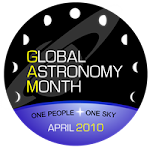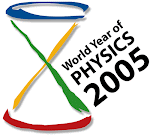
I was amused at a recent entry at New Scientist..."Meet the scoundrels of astronomy"...
History is littered with astronomers who doggedly pursued fame at the expense of the scientific method. While researching a biographical encyclopaedia, Thomas Hockey of the University of Northern Iowa compiled a list of "really bad" astronomers - those who, "for a time, successfully infiltrated the astronomical community, like wolves among the sheep".
Some of the "bad boys" are:
1.) Nicolaus Reimers Baer ["Ursus"] [1551-1600]
Ursus incited a bitter controversy in 1588, when he published a geocentric model of the solar system...that looked quite similar to Tycho Brahe's. In both models, the planets orbited the Sun, while the Sun orbited the Earth.
Some accounts suggest Ursus plagiarised the work. "He was not invited into Tycho's office, but he went there anyway," Hockey says. "Lo and behold, not long after his departure, he was promoting a theory very similar to Tycho's." Ursus was appointed imperial mathematician of the Holy Roman Empire, a position Tycho eventually took over.
2.) Chevalier d'Angos [1744-1833]
After accidentally burning down an observatory in Malta, d'Angos developed a reputation for discovering comets that did not exist. One such comet, reported to cataloguer Charles Messier, was most likely two completely separate objects --a star cluster and a galaxy--observed on different nights.
Later comet discoveries were also debunked, including one in 1798 with an orbit that matched a misprint in a 1672 astronomical record. d'Angos later laid claim to the discovery of Vulcan, a planet once imagined to orbit the Sun closer than Mercury.
3.) Spiridon Gopčević [1855-1928]
After marrying an Austrian blue blood, Serbian journalist Spiridon Gopčević reinvented himself as astronomer Leo Brenner, financing his own observatory on the coast of the Adriatic Sea ....
Brenner published drawings of Jupiter that were well accepted, Hockey says. But with an early taste of fame, Brenner went on to use his telescope to capture the "polar caps" of Mercury, the "oceans" of Venus, and 134 Martian "canals". After being banned from many journals, Brenner published his own, which included invented endorsements from respected astronomers. Such trickery suggests his erroneous discoveries were not simply innocent errors but deceptions, Hockey argues.
4.) Thomas Jefferson Jackson See [1866-1962]
See began a promising career examining binary stars at the Lowell Observatory in Arizona, but his abrasive approach put him at odds with other astronomers. Early on, the Astronomical Journal issued a warning that seemed to ban See from further publication, after he heatedly defended a paper of his that had been debunked.
See spent most of his career in isolation at a US Navy station on Mare Island, near Vallejo, California. While his work garnered the attention of newspapers, it was largely criticised by colleagues. See revived theories of an all-pervading "ether" in space, claimed he had proved that light was made up of egg-shaped particles, issued heated attacks on Albert Einstein, and summarily rejected Edwin Hubble's discovery of an expanding universe.
History of science indicates that astronomy was not the only venue.
Thomas Hockey
American Astronomical Society





























!["Coupling" 1976 [Gum-bichromate]](http://2.bp.blogspot.com/_IoU3bEFUwWc/S69lnr9G6AI/AAAAAAAAH58/O40Gg-G6rKk/S150/COUPLING+3.jpg)







No comments:
Post a Comment